CNIC Conference: 9th Annual Cardiovascular Bioengineering Symposium
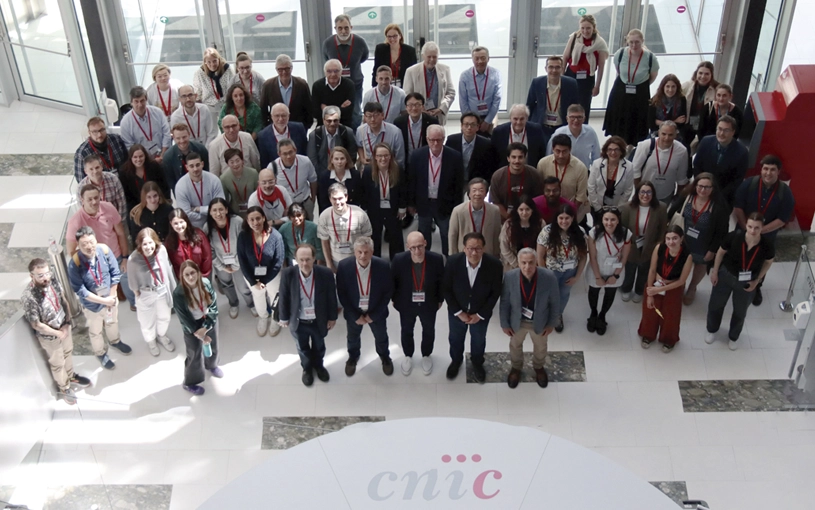
The Spanish National Centre for Cardiovascular Research (CNIC) brought together international leaders in the field of cardiovascular bioengineering to discuss heart failure, tissue regeneration and cell therapy in Madrid.
The 9th Annual Cardiovascular Bioengineering Symposium, co-funded by the National Institute of Health (USA), highlighted cutting-edge research in areas such as stem cell biology, cardiac regeneration, vascular biology, the metabolism, and cardiology.
The event was organised by Florian Anton Weinberger (CNIC), Hesham Sadek (CNIC / University of Arizona), Jianyi (Jay) Zhang (University of Alabama at Birmingham), Miguel Torres (CNIC) and Thanh Nguyen (University of Alabama at Birmingham) with guest speakers of international prestige such as Glynnis Garry and Joseph Hill (UT Southwestern Medical Center), Maria Kontaridis (Gordon K. Moe Professor and Chair of Biomedical Research and Translational Medicine) and Eduardo Marbán (Executive Director, Smidt Heart Institute, Cedars-Sinai Medical Center).
Dr Zhang is a leading figure in myocardial bioenergetics and stem cell therapy for cardiac repair. He was chosen to head up the UAB (University of Alabama at Birmingham) Biomedical Engineering Department in 2015 and his impressive career spans research, publications, and mentoring. His work focuses on heart failure, an irreversible, multifactorial condition that seriously affects public health worldwide.
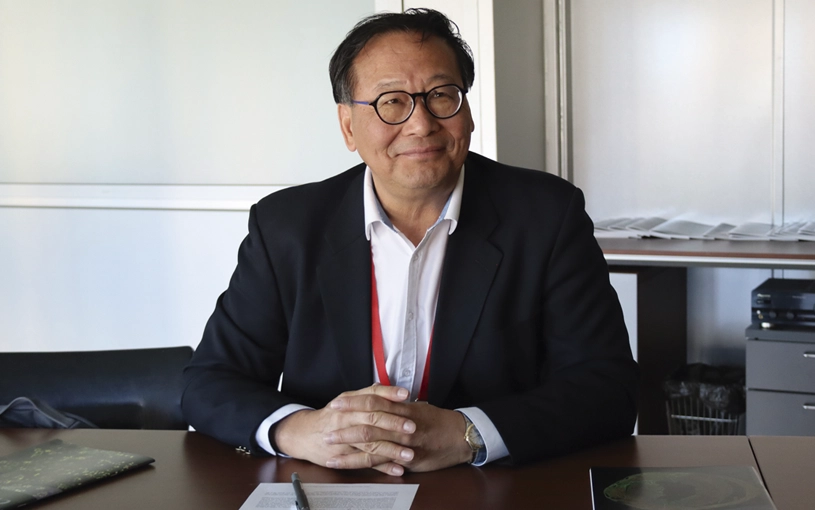
Zhang explained that progress in the development of treatments for this condition is slow because it requires decades of meticulous research. Although cell therapies are not yet standard, he noted, “recent trials show both their safety and promising results.”
His team has achieved major advances in areas such as the injection of cardiomyocytes derived from stem cells, which has been shown to improve heart function in pig models and stimulate cell regeneration. He also works on modified mRNA technology (SMRT), temporarily inducing cardiomyocyte division without causing arrhythmias, which has also been effective in animal models.
“These approaches balance regeneration and safety, although there are still challenges such as improving directed intravenous delivery.” He added, “New lines of research include umbilical cord stem cells, cell-less products such as extracellular vesicles and cardiomyocyte patches.”
Zhang firmly believes that cell therapy has a promising future in cardiovascular medicine and underscores the importance of events like the CNIC Conference, which promote global progress in the fight against heart failure.
The work of Dr Maria Kontaridis, Director of Research at the Masonic Medical Research Institute combines research in molecular biology with strategic leadership in cardiovascular, genetic, and neurodevelopmental diseases. She specialises in cell signalling, a field that allows her to study diverse diseases -from congenital heart diseases to autism and cancer- since cell mechanisms are similar in different tissues. Her laboratory uses advanced tools such as CRISPR, induced pluripotent stem cells (iPSC), transcriptomics and phosphoproteomics to discover how specific genetic mutations cause diseases and how they could be corrected at origin.
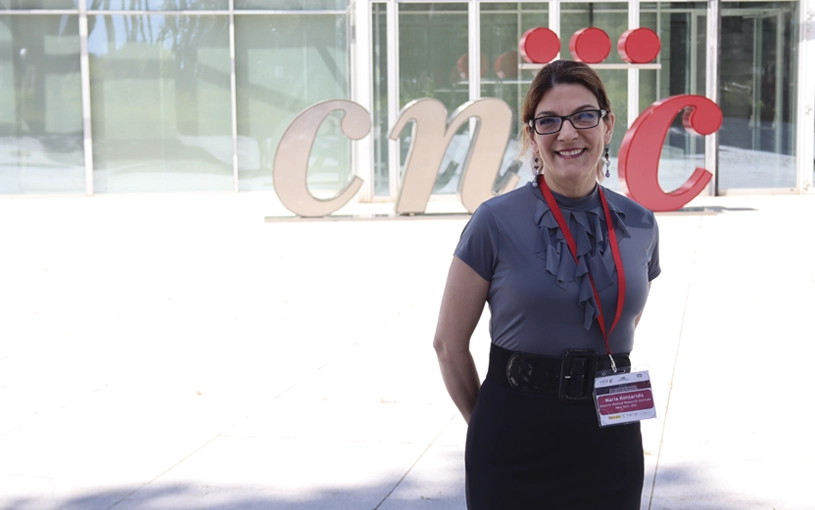
Her approach is based on a change of paradigm: starting with the clinical disease in order to research its molecular causes. This has led her work in the direction of personalised medicine and contributed to the development of new gene therapies, some of which have already been approved by the US Food and Drug Administration (FDA). In particular, she studies the genetic and molecular connection between heart diseases in children and neurodevelopmental disorders.
Dr Kontaridis researches the link between congenital heart diseases and neurodevelopmental disorders like autism. She has observed that both can share early genetic mutations affecting multiple systems, which suggests common molecular pathways in the development of the heart and brain. “This opens up the possibility of early intervention, or even the use of gene editing with CRISPR,” she commented.
Regarding CRISPR, she acknowledged that, although the discovery generated great enthusiasm, it has taken years to perfect and make safe and precise. Nowadays, she says, “gene editing has significantly matured and is becoming another key tool in modern medicine, combined with advanced therapies like nanoparticles and immunotherapy, which marks a milestone in the transformation of medical science.”
Commenting on the future of cardiovascular regenerative medicine, Dr Eduardo Marbán indicated that the traditional strategy of using pluripotent stem cells to generate cardiac tissue has been a complex process. Despite more than two decades of research, he says, “these cells have still not shown clear therapeutic effectiveness in large scale clinical trials. Examples such as those presented by Dr Keiichi Fukuda (Keio University, Japan) at the CNIC Conference show developments in individual cases but are still preliminary outcomes.”
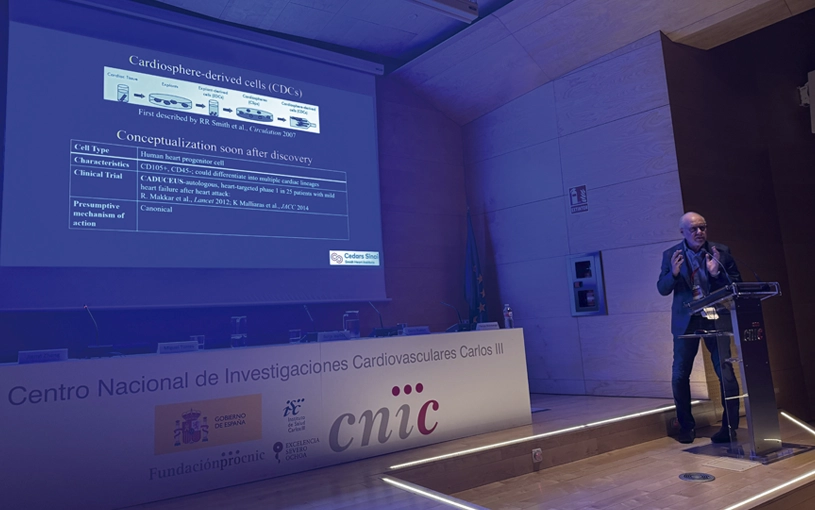
Dr Marbán is a renowned cardiologist and researcher whose career has focused on innovation in the treatment of heart diseases, from the creation of the first biological pacemaker to pioneering developments in cell therapy. Since 2004, his laboratory has researched cardiac progenitor cells, particularly their origin and therapeutic potential. One of his greatest achievements has been the development of Deramiocel, a cell therapy currently undergoing clinical trials, for the treatment of cardiomyopathy associated with Duchenne muscular dystrophy, a fatal, rare disease affecting cardiac and skeletal muscle.
Faced with such limitations, Marbán’s laboratory decided to take a different route: he work has focused on a type of endogenous cardiac stem cell without resorting to pluripotent stem cells or genetic engineering. This line of research has given rise to nine clinical trials, at least two of which have had promising results, with a third trial ongoing. “If the FDA gives its approval, Deramiocel will become the first cell therapy authorised for a heart disease (to date, the ones approved are for cancer or orthopaedics).”
One of the major advantages of this therapy is that it does not require genetic or chemical engineering. “These are primary cells, with no abnormalities, which significantly reduces the risks associated with other, more complex treatments,” he said
A fundamental discovery of his research was that the therapeutic effect of cells was due not so much to their direct integration in cardiac tissue but rather to the release of exosomes, small extracellular vesicles loaded with non-coding RNA. This has led to the development of new drugs based on these specific RNAs, eliminating the need to administer live cells. These molecules are more stable, reproducible, and easier to manage than cells, which is a step along the road to more practical, scalable therapies.
The American cardiologist, Joseph Hill, one of the world’s leading experts in cardiovascular research, highlighted the importance of fostering spaces where clinical physicians and basic scientists can come together. “For a long time we have lived in parallel worlds. Physicians speaking one language and scientists another. But when we come together at events like this conference, new ideas arise, barriers break down and progress is made to the benefit of patients,” Hill noted.
Faced with this new challenge, the range of treatments is still limited. Hill commented that the drugs currently available to combat obesity have demonstrated effectiveness but also risks and limitations: they must be continuously administered, can have significant side effects, and do not guarantee sustained improvement. “The question is: if you lose 20 kilos, does your diabetes disappear? Sometimes. Does your cardiac health improve? We still don’t know for certain. We have seen improvements in quality of life but not in mortality,” he added
For this specialist, such interdisciplinary interaction is particularly important in times like ours, when rapid advances are being made in biomedical knowledge. Many of the conference sessions had a strong translational component, with research already pointing to clinical applications. However, he warned, “Some of these ideas will become useful therapies and others will not; however, constant dialogue between science and medicine is essential.”.
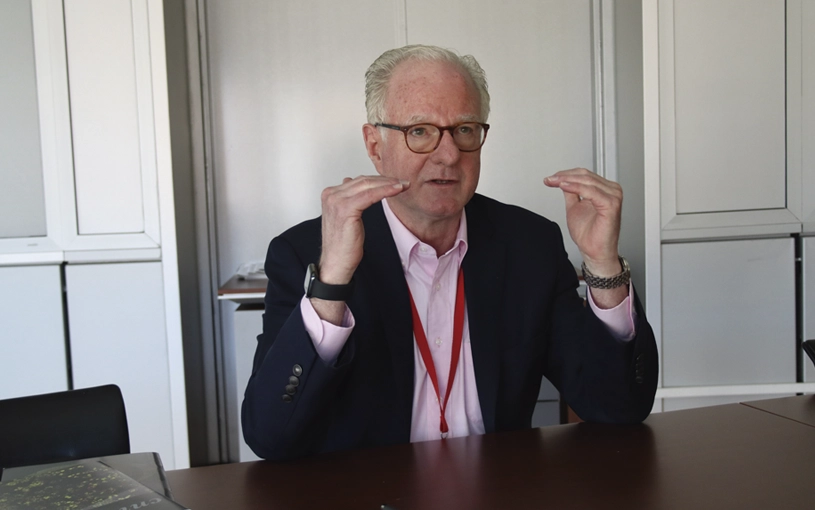
ill’s talk focused on one of the most concerning conditions of our times: heart failure with preserved ejection fraction (HFpEF). “This condition is different to hypertrophic cardiomyopathy and is experiencing an alarming increase worldwide,” he explained. Its spread is closely linked to the global increase in obesity, a phenomenon that affects developed countries and regions with fewer resources alike.
Although this syndrome is still not fully understood, the scientific community is starting to identify some of its fundamental causes. One of the major factors is meta-inflammation, a type of chronic inflammation induced by metabolic dysfunction. “Our laboratory has shown that meta-inflammation plays a key role in the development of HFpEF. And, as obesity increases worldwide, this type of inflammation is becoming a serious driver of cardiovascular diseases.”
Faced with this new challenge, the range of treatments is still limited. Hill commented that the drugs currently available to combat obesity have demonstrated effectiveness but also risks and limitations: they must be continuously administered, can have significant side effects, and do not guarantee sustained improvement. “The question is: if you lose 20 kilos, does your diabetes disappear? Sometimes. Does your cardiac health improve? We still don’t know for certain. We have seen improvements in quality of life but not in mortality,” he added.
That’s why he believes the solution will come with a combined approach: classic prevention (diet, exercise), new pharmacological therapies and future research. “For half a century we have known that taking care of ourselves works. New drugs are promising, and I’m optimistic, but I maintain we still have a long road ahead.”
With a career in cardiology spanning three decades, Hill has witnessed radical transformations in the management of cardiovascular diseases. “Today, we have technologies such as TAVR or stents, which have saved thousands of lives. Before, 30% of patients died after a heart attack. Now, that figure is only 3%,” he highlighted. Nevertheless, such success has brought a new challenge: a growth in the number of heart failure cases due to the persistent damage in hearts that survive a heart attack but in a weaker state.
n this context, he distinguishes two broad types of heart failure: HFpEF, for which there are still no effective treatments, and HFrEF (heart failure with reduced ejection fraction), which is better understood and treatable with the many effective drugs available on the market.
Nevertheless, access and treatment adherence are still a problem. “Asking a patient to take six or eight different drugs a day is complicated, particularly in countries like the United States where cost is an obstacle,” Hill noted.
He showed his support for the idea of the polypill, a strategy that combines various drugs in a single daily dose tablet. “For many people, particularly patients with limited financial resources or who are averse to taking multiple drugs, it can be a valuable tool. Its main limitation is that there can be no personalised adjustments, but it is worth considering for certain cases,” he concluded.
With over three decades of experience as a cardiologist specialised in heart failure and transplants, Dr Mariell Jessup, Chief Science and Medical Officer of the American Heart Association (AHA) has witnessed enormous progress in the treatment of these diseases. “Renin–angiotensin–aldosterone system inhibitors have radically transformed the treatment of heart failure. They have significantly improved patient survival and quality of life,” she noted, talking about ACE inhibitors, ARBs and the more recent neprilysin inhibitors (ARNIs).
Despite this progress, Dr Jessup warns that inequality of access to and application of tried and tested treatments continues to be a great challenge, particularly for the most vulnerable populations. “Limited access to qualified physicians, high costs and the complexity of treatments make it difficult to achieve healthcare equality. It is absolutely vital to tackle these systemic problems in order to guarantee nobody gets left behind,” she insisted.
From her position at the AHA, Jessup has worked extensively to lessen the distance between science and clinical practice in unattended communities. “We have spent over twenty years translating scientific advances into real clinical solutions. Our aim is that life-saving interventions should reach all demographic and regional groups with an emphasis on equity and access.”
Dr Jessup’s views on low and middle income countries are quite clear: the key is in primary prevention. “Eliminating tobacco consumption and controlling blood pressure are cost-effective interventions with a great impact. They can drastically reduce the burden of cardiovascular morbidity worldwide,” she stated.
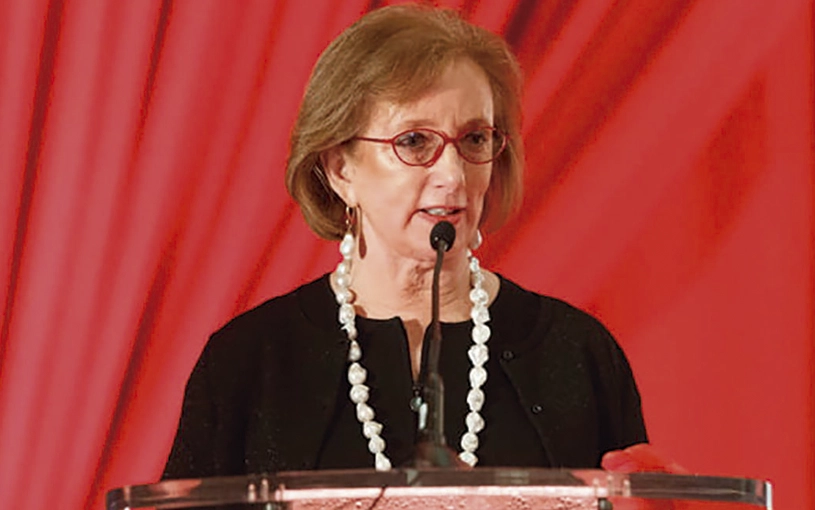
HAn aspect that Dr Jessup considers fundamental is the effective integration of the patient’s voice in research, health policies and healthcare models. “We cannot design solutions without listening to the people who need them. Clinical guidelines should be culturally sensitive, patient-focused, and applicable to diverse populations,” she stressed.
Jessup also brought up a major pending issue: the cardiovascular health of women. Although heart diseases are the main cause of death among women worldwide, this sector of the population still does not receive the necessary care. “It is essential to increase women’s own awareness of their cardiovascular risk. What’s more, we need a higher amount of specific research, and the adequate participation of women in clinical trials,” she affirmed.
The gap is directly related with the social determinants of health like poverty, education, or gender inequality. “Limited access to healthcare has a disproportionate impact on women. Health systems should prioritise the elimination of structural and economic obstacles,” she insisted.
As a global leader in cardiovascular health, Dr Jessup is clear about her commitment to women’s health: “We should never stop talking about it. To close the gap between cardiovascular outcomes between men and women, we need constant advocacy, more investment in specific research and more representation of women in all spheres.”













